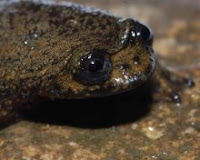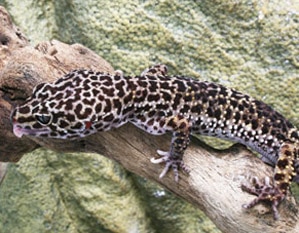
Those who keep or observe frogs soon learn of their prodigious appetites. Surely the champion Anuran eater must be the African bullfrog, Pyxicephalus adspersus. Native to southern Africa, this brute is a popular pet, and with good reason – captive longevity is said to approach 50 years. Two animals that I know of, kept in separate enclosures by the same person, both expired at age 21, in the same week.
The most memorable “frog-eating footage” I’ve seen focused on African bullfrogs in the Etosha Pan, northern Namibia. One enormous animal swallowed a centipede of at least 10 inches in length, which bit the frog numerous times on the way down. Another frog latched onto an emperor scorpion, which also did its best to make itself a “memorable” meal. But a note I read in an African nature journal tops all – a huge male frog burrowed into an outdoor cage at a South African snake park and was, when discovered, in the process of swallowing his 17th baby spitting cobra!
All of this eating results, as you might imagine, in frogs of impressive proportions – a male at the Fort Worth Zoo measured 10 inches from snout to vent and 9 ¾ inches around – a near perfect circle! His weight surely topped 5 pounds, but I do not have the exact figure.

Our own American bullfrog, Rana (Lithobates) catesbeianus, offers its African cousin some competition. While working at the Bronx Zoo, it became my habit to toss crickets to the bullfrogs that had colonized a small artificial pond. The frogs became bold in time, and visitors enjoyed the show. On one occasion a bullfrog’s leap for food brought it directly in front of another. The larger animal grabbed the smaller, who was fully three quarters his size and, in front of 50 or so second-graders, proceeded to jam the squirming neighbor down his massive gullet. I observed this fellow thereafter – his noticeably distended abdomen flattened out in two days, after which he again gobbled crickets with enthusiasm!
Male African bullfrogs are diligent parents – they defend the eggs and dig channels to bring water to their tadpoles. You can learn more at:
http://www.amphibiaweb.org/
 That Reptile Blog – Reptile, Amphibian and Exotic Pet Care and Information
That Reptile Blog – Reptile, Amphibian and Exotic Pet Care and Information





